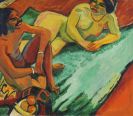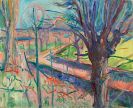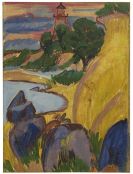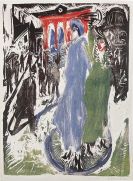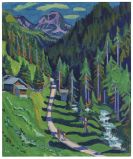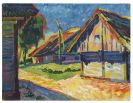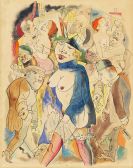
Richard Seewald
Arnswalde
1889 -
München
1976
Richard Seewald, draughtsman, painter and illustrator, was born in Arnswalde on 4 May 1889. In 1909 Seewald began to study architecture at Munich Polytechnic (now Technical University) but soon turned to painting, in which he was self-taught. After some of the drawings Richard Seewald did while still at secondary school were accepted for the magazine "Die Jugend", he began to draw cartoons for the magazines "Meggendorfer Blätter" (Munich) and "Die Lustigen Blätter" (Berlin) to earn his livelihood.
The Galerie Thannhauser, which regularly introduced the work of young Munich artists, showed a selection of Richard Seewald's prints for his first public appearance. Inspired by the painterly effects that could be achieved with drypoint etching, Richard Seewald did his first oil painting on the Dalmatian island of Rab in 1913.
Seewald was a member of The "New Secession" ["Neue Sezession"], which was founded in Munich in December that same year, and soon also joined the "Deutscher Künstlerbund". Exempted from military service, Richard Seewald was able to travel to the South of France and the Ticino, where he painted prolifically. Seewald began to illustrate works such as an edition of "Robinson Crusoe", "Penthesilea" (Heinrich von Kleist) and his own first book, "Tiere und Landschaften" ["Animals and Landscapes"].
Although Richard Seewald, under the spell of the trips he took to the Mediterranean, tended to illustrate publications dealing with that region, his approach to draughtsmanship yielded to a nuanced painterly style. At the age of only thirty-five, Seewald was appointed to a teaching position at the Werkschule in Cologne in 1924.
The cultural and political changes that were taking place in Cologne made Richard Seewald decide in 1931 to settle at Ronco sopra Ascona in the Ticino, where he became an honorary citizen in 1939. A convert to Catholicism by that time, Richard Seewald received commissions for frescoes in churches and other ecclesiastical buildings. Seewald did not return to Germany until 1948 and was not reintegrated in the cultural life of his native country until 1954.
Appointed professor at the Munich Fine Art Academy, Richard Seewald left four years later after differences of opinion with the board of governors. On his wife's death, Richard Seewald burnt about one hundred and fifty of his pictures as well as hundreds of sketches, designs and letters. In the late 1960s Seewald designed windows for the Herz-Jesu-Kirche [Church of the Sacred Heart] in Munich-Neuhausen and St Michael's in Iserloh.
Richard Seewald died in Munich on 29 October 1976.
Would you like to sell a work by Richard Seewald?
Infos for seller
